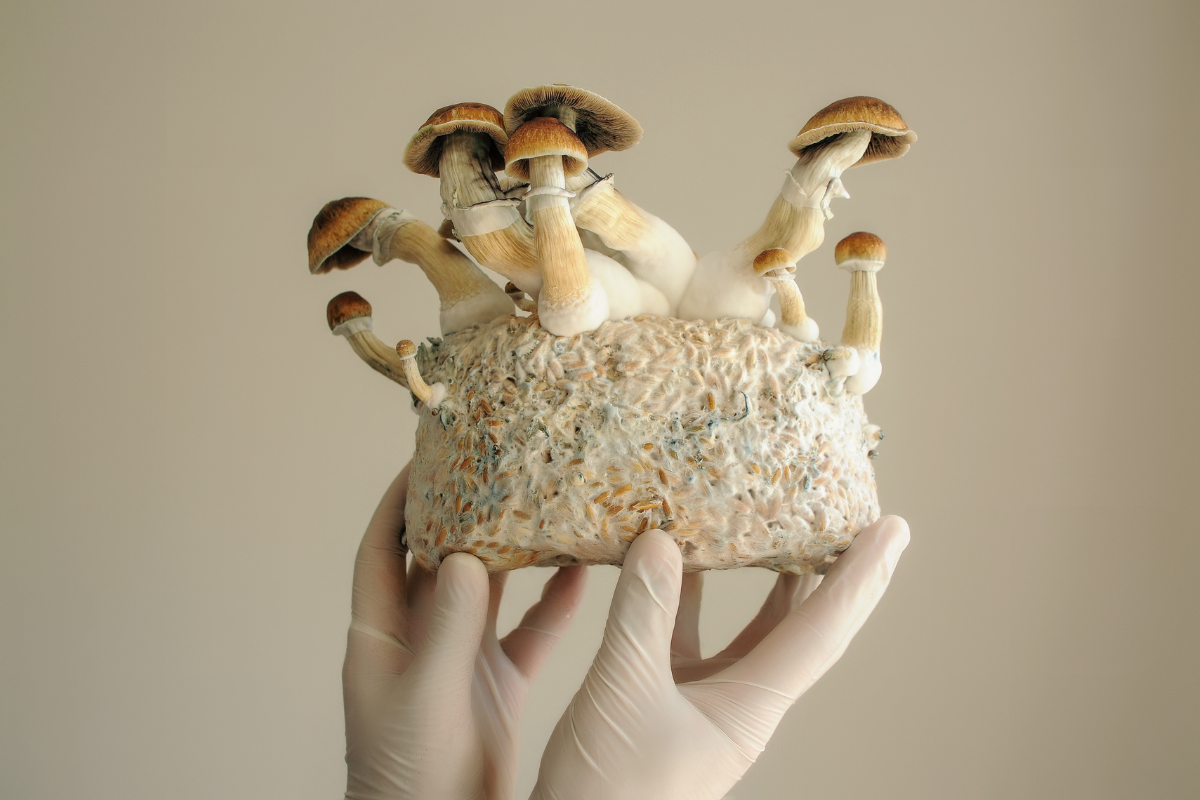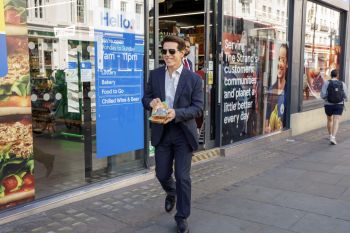
Mycelium Dream: How Fungus Roots Have Captivated Every Sector From Fashion to Food
As the world scrambles to find sustainable food options and materials, one natural entity can, seemingly, do it all: mycelium.
The root structure of fungus, mycelium resembles a network of encroaching branches and is viewed as a highly efficient ingredient with infinite possibilities. This applies particularly to the plant-based world, where the root is already used to develop nutritious alternative protein products, high-end leather substitutes, and more.
A Sustainability Heavy Hitter
What makes mycelium the environmentally conscious source ingredient of the moment? First and foremost, it is an entirely natural product, found on forest floors the world over. Made from infinitely renewable sources and with no need for external energy to be diverted for its production, the root system grows quickly and efficiently, earning it the title of most abundant organism on earth. Aside from this, it is a powerhouse of regeneration, dispensing vital nutrients into soil as it breaks down and reforms.
In nature, mycelium carries out vital functions, including improving water efficiency and nutrient acceptance of many plants. It is also a valuable food source for a plethora of animals, but it is in the commercial sphere that its full potential is beginning to come into focus.
Thanks to the robust nutritional values of fungus roots structures, including high protein and fiber levels, they are increasingly used in sustainable food production, apparently focusing on creating meat alternatives. But this is not the only sector to have uncovered the vast potential of ‘mushrooms.’
Alongside animal meat, mycelium is being used to replace several other conventional products. So far, these include–but are not limited to–leather, single-use plastic packaging, insulation, and bricks (yes, really), all of which have been created using fermentation.
Though researchers have yet to unlock mycelium’s full potential, some products are already commercially available.
Mycelium ‘Meat’ as The New Alternative Protein
Arguably, mycelium’s most voracious step forward into the consumer sphere is through its fermentation to produce viable meat alternatives.
The newest development in the mycoprotein (a term coined by Quorn in the 1980s) sector, mycelium allows manufacturers to tap into its natural umami taste to create a variety of meat-like products. These can include chicken, beef, and fish, all of which can be made as ‘whole cuts,’ in a step away from more traditional nuggets or pieces. This represents a major milestone for alternative protein and can entice more omnivore consumers to try plant-based steaks and cutlets.
While mimicking the texture and flavor of animal protein, mycelium meat contains zero trans fat and cholesterol and significantly less saturated fat, making it a healthier option. It is also a far more sustainable alternative that carries no animal welfare concerns, both of which are serious considerations for today’s consumers.
As a result, mycelium meat manufacturers are increasing in number and enjoying significant success with their proprietary launches. US-based Meati is a prime example of what is possible with mycelium and consumer openness to a sustainable alternative to animal protein.
In 2022, the company announced pre-orders for its highly anticipated whole-cut chicken-style cutlets. It was the first direct-to-consumer offering, with every product selling out in under 24 hours. Reportedly, 1,116 cutlets were claimed in the first hour alone. Since then, Meati has continued to grow, committing to an 80,000 square foot production facility called the ‘Mega Ranch’ that–when fully operational– will have gargantuan capacity. Meati president Scott Tassani claimed that the site will be able to produce the equivalent amount of meat to 4,500 cows, every 24 hours.
Mycelium Fermentation Technology Moves Forward
While mycelium appears to offer enormous potential for a drastic food system shake-up, investing in the necessary industrial fermentation equipment and expertise is costly. This maintains the ongoing niche factor of the mycoprotein sector. However, in a bid to remove cost and experience barriers, one former mycoprotein manufacturer has turned its attention to providing equipment to other manufacturers.
Kynda, formerly Keen 4 Greens, believes in the power of mycelium to change the current unsustainable food system so much that it has moved away from proprietary production of mycelium meat alternatives. It has now developed plug & play fermentation technology that will allow other manufacturers to tap into the market quickly and with cost-efficiency as a priority.
“We started with mycelium fermentation technology since it offers various product and cost advantages,” Daniel MacGowan-von Holstein, Kynda’s CEO, explained. “Not only is it high in protein and fiber, comes with a meat-like texture and umami flavor, it is clean label and contains all 9 essential amino acids. It also offers consistent quality and security of supply and increased resource and price efficiency (e.g. by-product utilization).”
From Forest Floor to Fashion Catwalks
Mycelium as a meat alternative is an exciting and ongoing development but it is also making waves with its fashion credentials. Thanks to a number of brands including Adidas and Lululemon, plus luxury designer Stella McCartney, mycelium-based leather alternatives are gaining traction and taking opportunities away from conventional leather suppliers.
At the center of the development is San Francisco-based biotech company Bolt Threads. Claiming to be on a mission to create “sustainable versions of the materials people already know and love,” it has enjoyed success with its ‘Mylo Unleather’ line, which is promoted as a mycelium-based alternative to animal and synthetic leathers. Created in under two weeks, using fermentation processes powered by renewable energy sources and vertical farming techniques that minimize land use, Bolt Threads claims to have landed on a truly comparable material to animal skin that treads far more gently on the earth.
Buttery-soft Mylo Is now being used across a vast spectrum of consumer products, from designer handbags to sneakers, and even luxury cars. As the material filters down into varying price points, the ‘leather as default’ consumer mindset will naturally shift to accept sustainable options.
Mycelium Market Predictions
In 2021 the global mycelium market was valued at $2.65 billion. This is expected to grow significantly–at a compound annual rate of 7.80%–to reach $5.21 billion by 2030.
The sector is expected to be largely bolstered by food manufacturing growth, alongside new innovations still in their infancy, such as building materials, skincare products, and more.


